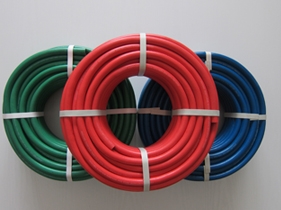
polyurethane wear-resisting Wear resistant hose Maintenance measures; Cleaning: It is recommended to empty the hose after use. Clean if necessary. Inspection: After each use, the rubber tube must be inspected to ensure that there is no structural damage. Pressure: If the rubber pipe is under great pressure during use, or the outer layer of the rubber pipe will contact with the conveyed liquid for a long time, it is recommended to conduct a hydrostatic test. Due to the natural characteristics of rubber, the physical properties and performance levels of all rubber products will change. This change usually occurs over time, depending on the type of rubber used. However, changes may also accelerate due to several factors or a combination of several factors. Other materials used to reinforce rubber tubing may also be adversely affected by improper storage conditions. Detailed step 1. Polyurethane sand blasting pipe mandrel: the mandrel is usually pulled backward, mainly to increase the firmness of the connection between the mandrel and the hose. After the spindle barb processing is completed, the barb tip must also be passivated, otherwise the barb tip will pierce the lining material of the high-pressure rubber tube during the buckling process. Wear resistant hose Where can I find it? Even if the high-pressure rubber pipe joint is firmly buckled, if the inner layer is damaged, high-pressure water will leak from the buckle. 2. Polyurethane sand blasting pipe sheath: the sheath is generally in the form shown in the figure, the wall thickness should be moderate, and the internal rectangular tooth height should not exceed 2mm, that is, (d-d) should not exceed 4mm.
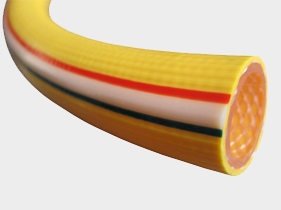
Nanning Wear resistant hose Structure type of product: sand blasting hose is mainly composed of liquid resistant inner rubber layer, middle rubber layer, 2 or 4 or 6 layers of steel wire winding reinforcement layer and outer rubber layer. The inner rubber layer has the function of bearing the pressure of the transmission medium and protecting the steel wire from erosion, the outer rubber layer protects the steel wire from damage, and the steel wire (0.3-2.0 steel wire) layer is the reinforced skeleton material. Application of sandblasting hose products: high-pressure sandblasting hose is mainly used for mining hydraulic support and oil field exploitation, and is suitable for engineering construction, lifting and transportation, metallurgical forging, mining equipment, ships, injection molding machinery, agricultural machinery, various machine tools, and mechanical and automatic hydraulic systems in various industrial sectors to transport petroleum base with a certain pressure (higher pressure) and temperature. (such as mineral oil, soluble oil, hydraulic oil, fuel oil, lubricating oil) and water-based liquid (such as emulsion, oil-water emulsion, water). And liquid transmission. The working withstand voltage can reach 70-100 MPa. The company's sand blasting hose standards refer to national standards/T10544-03, DIN 20023, and SaE100 R9-13. Wear resistant hose Where can I find it? Made of special synthetic rubber, it has excellent oil resistance, heat resistance and aging resistance. The rubber hose has high bearing pressure and superior pulse performance. The tube body is tightly combined, soft to use, and has little compression deformation. The hose has excellent bending resistance and fatigue resistance. The sandblasting hose is 20m long and can be made within 50m as required.
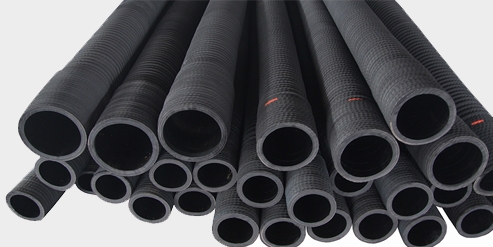
We all know Wear resistant hose Where can I find it? The noise pollution in industrial production is very serious, and noise pollution is also an important factor affecting workers' enthusiasm for production. Ball mills were once a major source of noise in mining equipment. In order to reduce the noise generated by ball mills, protect the physical and mental health of workers, improve workers' enthusiasm for production, and create greater profits for the company, Through the efforts and research of domestic and foreign industry experts, the ball mill liner has been transformed. Through repeated tests and comparison, it is found that the noise generated by the rubber liner and the manganese steel liner of the ball mill is far less than the manganese steel liner when the technical parameters are up to standard. According to the data provided by the noise monitoring station and the concentrator, We analyzed the noise intensity and the economic benefits: the domestic ND2 precision sound level meter and octave filter were used for detection, and the sound level meter was calibrated by the provincial sound level meter measurement and verification station; There is no sound insulation room in the ball mill workshop. The monitoring points are arranged according to the position of the ball mill and the flow of workers to observe the mechanical operation, 2m away from the sound source. One monitoring point is respectively set on the left and right of the east and west of the workshop and in the middle of the two ball mills. The measurement method is in accordance with the Noise Detection Specification for Industrial Enterprises. As the noise in the workshop is continuous and steady, sound level A is used as the evaluation basis. The rubber lining plate is manufactured by Hainan Rubber Lining Plate Factory according to the ball mill shell structure and the original manganese steel lining plate specification (1.4mx0.74mX0.07m). Nanning Wear resistant hose First, take out the manganese steel lining plate in the ball mill barrel, and then install the rubber lining plate in the barrel in turn (front and back). Each ball mill is installed with 48 pieces. First, use the pressure strip to compress, and then use the screws to fix the rubber lining plate on the ball mill barrel, so as to prevent falling off when rotating. The noise intensity of the ball mill workshop with manganese steel liner is 94-103dB (A), while the noise intensity of the ball mill workshop with rubber liner is 87-92dB (A), and the noise reduction difference is 7-11dB (A). The rubber liner has good noise reduction effect.
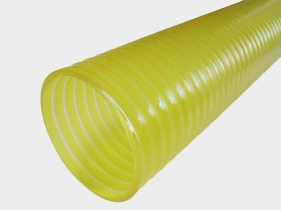
wear-resisting Wear resistant hose It will burst for a long time due to frequent and severe pressure shocks. This situation is usually not caused by excessive static pressure, but is related to the strength and frequency of pressure shock. During the operation of construction machinery, the oil pressure in the oil resistant hose will rise or fall repeatedly, and then it will form frequent pressure shocks to the oil pipe, causing the oil seal of each part to become more damaged, the oil resistant hose will bubble and break, and the pipe joint will become loose and leak. Therefore, in the process of operation, the valve rod should not be pulled too hard, and it needs to be gentle. The application temperature of the oil in the oil resistant rubber hose is too high, resulting in aging and bursting of the rubber hose. During the operation of construction machinery, the hydraulic system will cause the oil to become hot due to power failure, and the influence of external temperature (especially in summer) will cause the oil temperature to rise sharply. The higher the oiling temperature is, the easier the rubber hose ages, the worse the elasticity is, the lower the strength and sealing function are, and the oil resistant hose will burst quickly. Therefore, Wear resistant hose Where can I find it? During operation, when the temperature rise of the hydraulic system is too high or too fast, the causes should be found and eliminated in time. Necessary cooling measures shall be taken for summer operation, especially continuous operation.
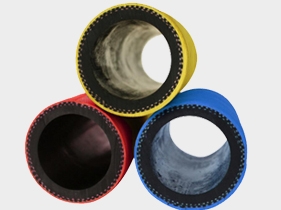
wear-resisting Wear resistant hose It is characterized by high pressure, fire resistance, heat insulation, beautiful pipe body, corrosion resistance, anti-static, high wear resistance, light weight, high and low temperature resistance, good low-temperature bending performance, and long service life. Use: oilfield well control operation, metal smelting, chemical industry, etc. High temperature environment with heat source or thermal radiation. Hydraulic control pipeline of BOP for oil exploration and drilling. High pressure flame-retardant sand blasting pipe is mainly used for hydraulic transmission, medium transmission or power transmission under high-pressure, flammable and high-temperature environment. This product has been widely used in petroleum, chemical, marine, metallurgical and other industries. Flame retardant and fire-resistant: structure: take high temperature and high pressure steel wire winding hose as the base, and the outer skin is covered with nano fire-resistant coating, stainless steel wire braid and flame retardant layer. Hydraulic pipes in high-temperature environment near open fire, such as metallurgical industry, steelmaking, blast furnace, open hearth furnace, etc. Main Uses Hydraulic transmission is widely used in petroleum, chemical, marine transportation media or power transmission under high-pressure, flammable and high-temperature environments. Our products flame retardant sand blasting pipes are characterized by high pressure resistance, fire resistance, heat insulation, oil resistance, acid and alkali resistance. Wear resistant hose Where can I find it? When used in oil drilling well control system, it is superior to ordinary hard pipes, safe and reliable, easy to install and disassemble, time-saving, labor-saving, corrosion resistant, maintenance free, and long service life. Fire resistance: it can work for 15 minutes at 750 ℃. Oil resistance: Immerse in hydraulic oil at 40 ℃ - 100 ℃ for 24 hours without deterioration or falling off.
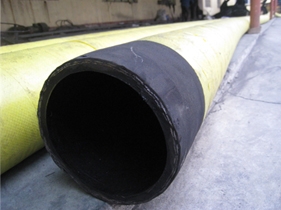
wear-resisting Wear resistant hose 1. During the molding of rubber products, the cohesive force of the elastomer cannot be eliminated due to the large pressure pressing. During the molding and mold release, extremely unstable shrinkage (the shrinkage rate of rubber varies due to different rubber types) often occurs. It must take a period of time before it can be gentle and stable. Therefore, at the beginning of the design of a rubber product, no matter the formula or the mold, it is necessary to carefully calculate the matching. If not, it is easy to cause dimensional instability of the product, resulting in low product quality. 2. Rubber belongs to thermosetting elastomer, while plastic belongs to thermosetting elastomer. Due to different sulfide types, the temperature range of rubber molding and curing is quite different, even affected by climate change and indoor temperature and humidity. Therefore, the production conditions of rubber products need to be properly adjusted at any time. If not, there may be differences in product quality. 3. The rubber product is the rubber mixture made from rubber raw materials after mixing in the internal mixer as the raw material. The formula is designed according to the characteristics of the required rubber products during mixing, and the required product hardness is determined. The product is molded by the rubber plate vulcanizer. After the product is formed, flash processing shall be carried out to make the product surface smooth without burrs. 4. The aging test of rubber products belongs to the category of aging test. Rubber aging refers to the phenomenon that the performance and structure of rubber and products are changed due to the combined effect of internal and external factors in the process of processing, storage and use, thus losing their use value. Wear resistant hose Where can I find it? It is characterized by cracking, tackiness, hardening, softening, chalking, discoloration, mildew, etc. The following conditions shall be met when the ball mill uses the rubber lining plate: 1. The hardness of the ground material. The iron base alloy is similar to the rubber lining plate for materials below medium hardness, and the rubber lining plate is superior for materials above medium hardness. 2. The temperature of rubber lining plate is generally 70 ℃ - 90 ℃, and it can reach 110-130 ℃ under special circumstances. The temperature should be lower during dry grinding. 3. Feed size. Generally, the ball mill shall be more than 20-25mm; For the autogenous mill, the feeding particle size can be larger because no steel ball is added.








